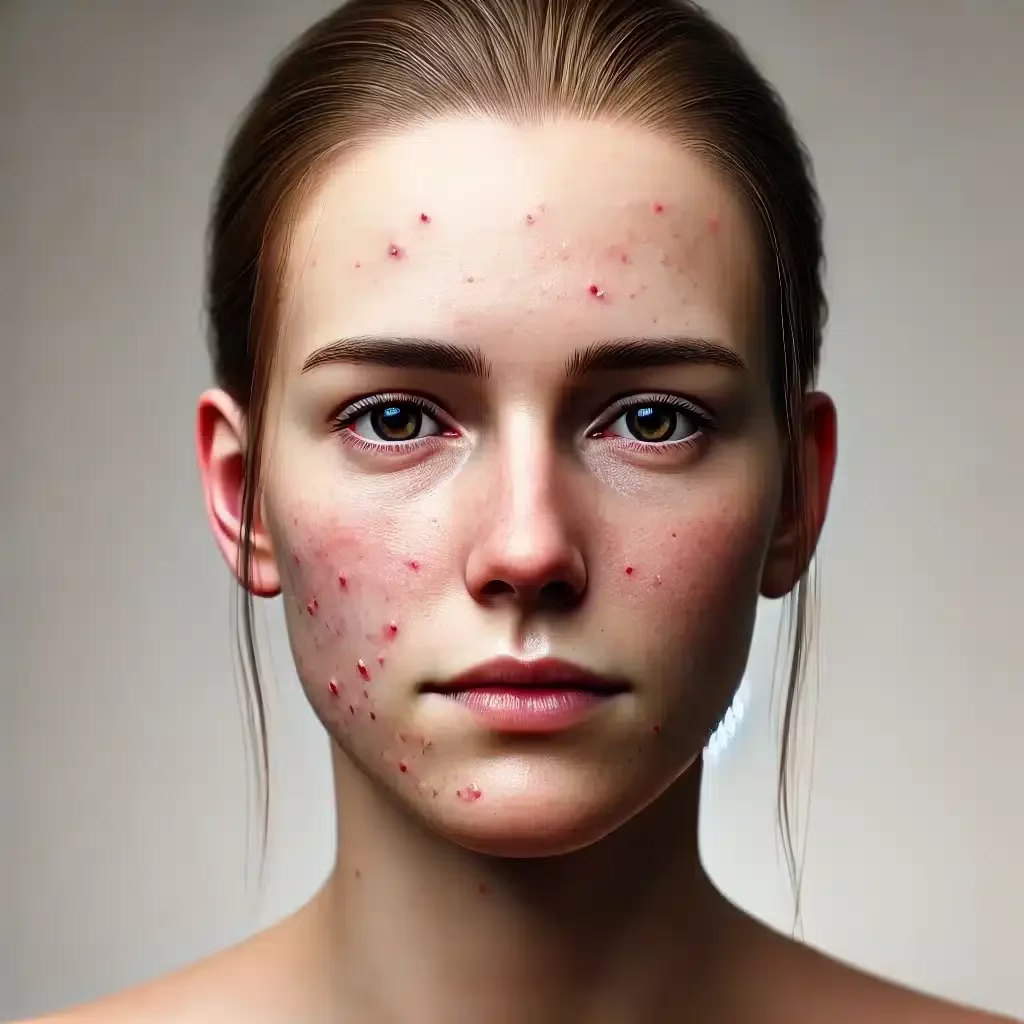Types of Acne
Understanding the Types of Acne

Acne vulgaris manifests in various ways. These differences is key to managing it effectively
Where Acne Appears:
Acne typically appears in areas with many sebaceous glands, which produce oil. These areas include the face, neck, chest, upper back, and upper arms.
Types of Acne Lesions:
- Closed Comedones (Whiteheads): Small, non-inflammatory bumps that are white, greyish, or skin-coloured. They are closed pores filled with oil and dead skin cells.
- Open Comedones (Blackheads): Similar to whiteheads but with a central opening. The black colour comes from oxidation, not dirt.
- Papulopustular Acne: This includes both papules (small, red, tender bumps) and pustules (similar to papules but with a white or yellow pus-filled centre). These are inflammatory lesions.
- Nodular Acne: Larger, deeper, and more painful than papules and pustules. These inflamed lesions can sometimes be mistakenly called “cystic acne,” but true cysts are less common.
Acne Severity
Acne severity is classified into different grades based on the types of lesions present and their extent. This helps guide treatment decisions. Here’s a more detailed look:
Mild Acne
- Characteristics: Mostly whiteheads and blackheads, with occasional papules and pustules.
- Location: Typically limited to the face, but may also appear on the chest or back.
- Impact: Generally causes minimal discomfort, and scarring is uncommon.
- Treatment: It is often managed with over-the-counter topical treatments containing ingredients like salicylic acid or benzoyl peroxide. A consistent skincare routine focusing on gentle cleansing and oil control is essential.
Moderate Acne
- Characteristics: A significant increase in papules and pustules, along with more whiteheads and blackheads.
- Location: Commonly affects the face, chest, and back.
- Impact: It can cause more noticeable inflammation and discomfort. There’s a higher risk of post-inflammatory hyperpigmentation (dark spots), and some scarring may occur.
- Treatment: May require prescription topical medications, such as retinoids or antibiotics, in addition to over-the-counter options. Oral antibiotics may be considered in some cases.
Severe Acne
- Characteristics: Numerous papules and pustules, along with the presence of nodules. Nodules are larger, deeper, and more painful lesions.
- Location: Widespread across the face, chest, and back.
- Impact: Causes significant inflammation, discomfort, and a high risk of scarring. It can have a substantial impact on self-esteem and quality of life.
- Treatment: Often requires oral medications, such as isotretinoin, in addition to topical treatments. Corticosteroid injections for individual nodules can reduce inflammation and scarring.
It’s important to remember that acne severity can fluctuate over time. Learn more about our treatments here.
Your Acne Questions, Answered
Curious about those breakouts? We've compiled answers to some frequently asked questions about the different types of acne, to help you better understand your skin.
Book NowWhat's the difference between a blackhead and a whitehead?
Both blackheads and whiteheads are comedones, which are pores clogged with oil and dead skin cells. The key difference lies in whether or not the pore opening is closed.
- Blackheads (open comedones) Have an open pore that allows the contents to be exposed to air. The black colour is due to oxidation of the material within the pore, not dirt.
- Whiteheads (closed comedones): Have a closed pore, trapping the contents beneath the skin’s surface. This results in a small, white or skin-coloured bump.
Are all pimples considered acne?
Not necessarily. While pimples are a hallmark of acne, other skin conditions can also cause pimple-like bumps. These include:
- Folliculitis: Inflammation of the hair follicle, often caused by bacteria or fungi.
- Keratosis pilaris: A common condition that causes small, rough bumps, typically on the upper arms, thighs, or buttocks.
- Insect bites: Can cause red, itchy bumps that might resemble pimples.
What are those deep, painful bumps under my skin?
Those are likely nodules, a type of inflammatory acne lesion. They form deeper within the skin than papules and pustules and can be quite tender to the touch. Nodules are more prone to causing scarring, so it’s important to avoid squeezing or picking at them. Treatment often involves oral medications or procedures like corticosteroid injections.
I keep getting acne around my mouth and chin. Is there a reason for this?
While acne can appear anywhere on the face, certain areas can be more prone to breakouts depending on various factors. Acne around the mouth and chin is often linked to hormonal fluctuations, which can increase oil production in those areas. This is particularly common in women and may be more noticeable around the time of their menstrual cycle. Other potential contributing factors include:
- Touching your face: Resting your chin on your hand or frequently touching the area around your mouth can transfer bacteria and irritate the skin.
- Cosmetics and skincare products: Certain ingredients in makeup or skincare can clog pores and contribute to breakouts.
- Friction: Tight-fitting masks or clothing that rubs against the skin can also trigger acne in those areas.